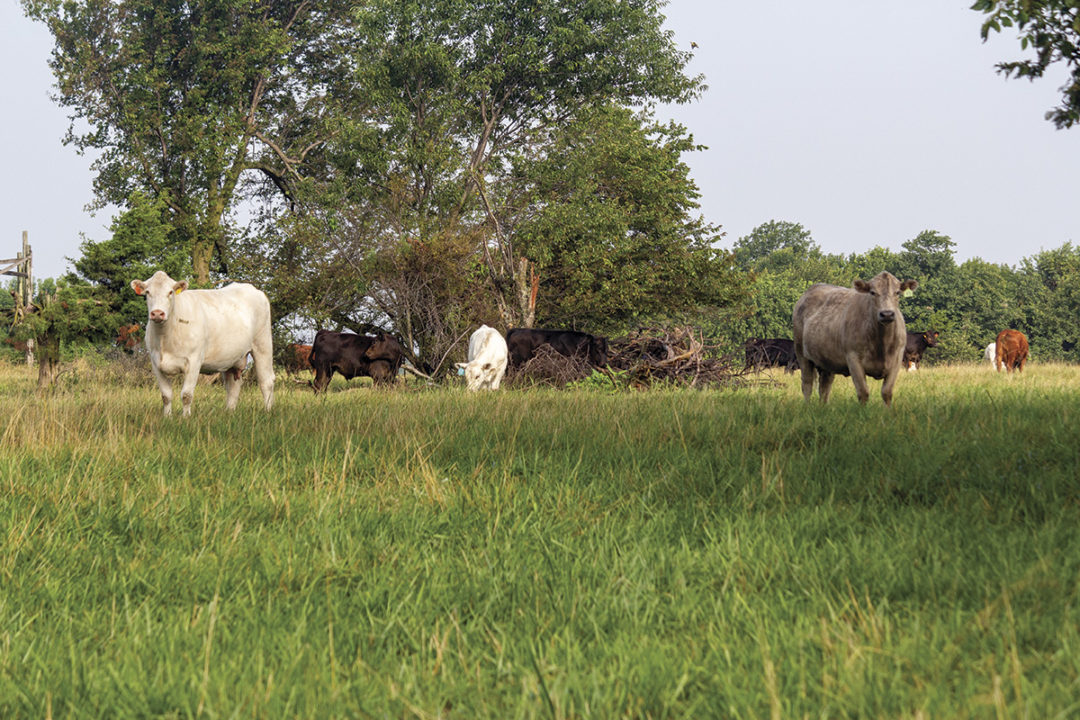Cattle producers invest their time and resources in the best vaccination protocols and nutritional programs. However, these efforts are not fully utilized without an effective deworming strategy. Why?
Internal parasites impact an animal’s nutritional status in three ways: They decrease feed intake, they decrease nutrient absorption, and they increase nutrient requirements. This impacts and compromises every aspect of biology – including growth, milk production, immune function and reproduction.
An Iowa State University study demonstrated cow-calf producers can add $274 per head of value through animal health technologies. Of that $274, $201 was a result of deworming. For stockers, $24 of the $95 per head impact of animal health technologies was due to deworming.
An effective deworming program is critical for an efficient operation, helping ensure that cattle utilize every resource in the best way possible.
Deworming and cattle immunity
Internal parasitic worms have a direct effect on nutrition status because they burrow into the animal’s gastric glands and damage the gut lining, causing inflammation. The animal’s immune system reacts and puts its effort toward fighting the threat.
Th1 and Th2 are known as “helper cells” in bovine immune systems. The Th1 response is associated with a viral or intracellular infection. A Th2 response, while not necessarily specific to parasites, is commonly associated with parasites and can limit a Th1 response.
A large enough worm burden results in a Th2 response, causing the immune system to focus almost solely on fighting the parasites and leaving the animal vulnerable to intracellular invaders like coccidiosis, pinkeye or another type of virus.
An Oklahoma trial compared the effects of deworming stocker cattle on pasture during the suckling phase and in the subsequent feedlot phase. Morbidity was highest in cattle that were never dewormed, and lowest in cattle that were dewormed in both phases. Additionally, cattle that were never dewormed were treated more times for respiratory disease than those that were dewormed in either or both phases.
Younger animals, such as suckling calves, weaned calves, replacement heifers or stocker cattle, are much more susceptible to parasites because they don’t have any immunity built up against them. This will develop as an animal gets older, but cattle are never fully immune to parasites.
Deworming prior to vaccination
Ideally, a modified live 5-way vaccine will trigger a Th1 response. If parasitized cattle have a Th2 response, this can impact the animal’s ability to positively respond to the vaccine.
Vaccine labels state, “effective for the vaccination of healthy cattle.” Several studies have demonstrated the benefits of proper deworming on the health status of an animal. Research shows that calves dewormed two weeks pre-vaccination maintained lower rectal temperatures following an infectious bovine rhinotracheitis (IBR) challenge than those dewormed at vaccination or not dewormed at all. They were better able to withstand the disease challenge than those who had not been dewormed.
It also is important to deworm calves at cowside. At about 6 to 8 weeks old, calves start ruminating and are at high risk of internal parasite infection. Deworming at earlier stages of infection can result in improved weaning weights. For spring-calving herds, it typically is good to deworm calves six to eight weeks after turnout onto pasture.
Improve efficiency with summer deworming
Cattle pick up parasites almost immediately once they are on green grass, and those parasites can start doing damage in a very short time. If cattle are not dewormed until they come off the pasture in the fall, they have several months of picking up worms that damage their gut.
A research trial conducted in midsummer 2021 assessed the effectiveness of utilizing a dewormer in the daily feed supplement of stocker cattle on pasture. Two groups of cattle, 50 head each, were treated the exact same at arrival. At days 28 and 56 after turnout, only one group was given a dewormer mixed in with the daily feed supplement.
Every 14 days, a fecal egg count reduction test (FECRT) – a standardized diagnostic tool to test manure for the presence of intestinal parasite eggs – was collected from each group. The purpose was to determine when there would be a spike in parasites, which was seen around day 56 of the trial in the control group.
Steers that were dewormed on days 28 and 56 gained 22 more pounds and had a 0.3-pound greater average daily gain (ADG) than the control steers. At the conclusion of the trial, these steers also had an average fecal egg count of zero eggs per 3 grams, while control steers had an average fecal egg count of 128.6 eggs per 3 grams.
This illustrates that deworming cattle ahead of vaccination doesn’t have to mean a trip through the chute or be labor-intensive. Using feed and mineral forms of dewormers – such as range cubes, dewormer blocks or mineral – require relatively little time and labor and are highly effective.
Parasite control resources
For more than a decade, Merck Animal Health has maintained the world’s largest FECRT database to monitor field-use efficacy of dewormers approved for use in cattle in the U.S. The bottom line is: Not all dewormers are reaching the threshold for effective deworming.
It is recommended to annually evaluate your deworming program by doing a FECRT test annually. You can request a free FECRT kit from Merck Animal Health. Work with your veterinarian to assess your deworming program and ensure you are getting maximum efficacy from your dewormer program.










